. . . thanks to a Los Angeles Police Department Detective Lieutenant.
Editor’s Note: I’m happy to introduce a new contributor to our wonderful RevolverGuy audience. Like all of our guest contributors, Tony started out as a fan of RevolverGuy, and soon became a friend. When I learned of his tremendous storytelling talent, and his exceptional grasp of law enforcement history, I knew we had to get him to write something for us! Fortunately, Tony agreed, and I know you’ll be as thankful as I am for that, after you read his inaugural piece. Readers know that we enjoy diving into the technical details about revolvers here in these pages, and I’m proud to say that we lead the pack in this regard, but there’s a human side to the revolver story, too, and Tony is just the guy to share it with us. Enjoy! –Mike W.
*****
This website is one of this old man’s favorite hangouts on the web, kinda like the local coffee shop where like-minded folks get together and discuss life and all that it brings. The writers on this site are all dedicated professionals.
I was recently visiting with Mike Wood and we were sharing some of our favorite stories, books and other resources. He asked me to do a piece from my life long study of crime and law enforcement history about the human side of guns and the folks who used them for bad or good. I was not sure about agreeing to his request because I don’t place myself in the same category of the fine editors and writers on RevolverGuy, but Mike is persuasive, in an understated way, so here it goes.
The Crime
On Wednesday, the 23rd of May 1928 a violent bank robbery occurred in a small town in eastern Colorado that would eventually result in the deaths of four citizens and four criminals. This crime would spawn the first solution of an armed robbery through a single fingerprint, be the inspiration for characters in two national comic strips, and require a massive, multiple agency manhunt that involved a large portion of the country.
Around 1:00 p.m. on the above date, four armed robbers entered the First National Bank of Lamar, Colorado and declared a hold up. Bank President Amos Parrish kept a revolver in his desk drawer for just such an occasion. He called the .45 caliber, Colt Single Action Army “Old Betsy” and claimed it had been given to him by Frank James, the Missouri outlaw.

Parrish fired his first round at extreme close range striking one robber near the mouth. The Colt SAA had a misfire on the second attempt and before the third, Parrish had been shot twice in the head with a .44 Special by the robber he had wounded, so his third round struck the ceiling.
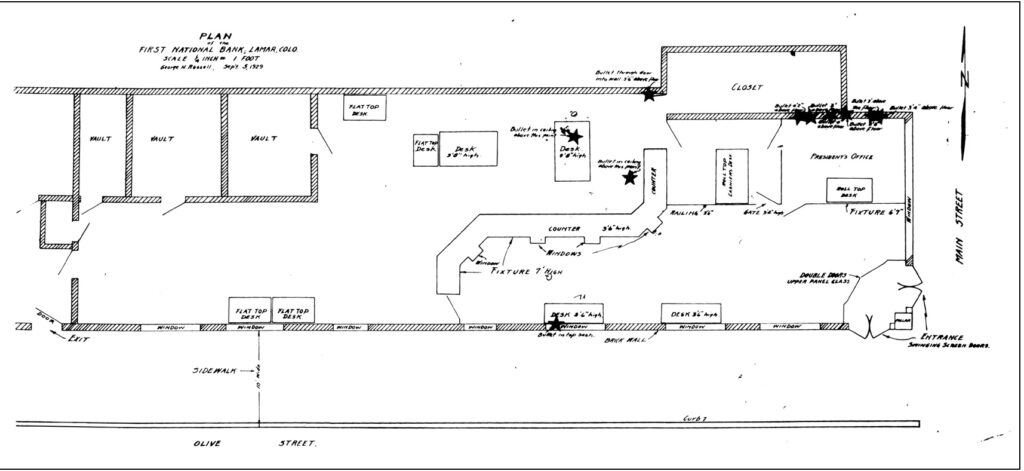
John Parrish, the bank’s cashier and son of Amos Parrish, turned and moved toward the wall mounted telephone and was shot through the heart with a .38 Special by the one of the bandits.
After the death of the two bank employees and the wounding of the gang member, an attempt was made to gather up cash. In the meantime, two rifles were brought in from the car by one of the gang members. The robbers decided it was time to vacate the premises and did so, taking two bank employees with them as hostages/shields. They fled down Olive Street in their blue Buick. Shortly after they fled, Prowers County Sheriff, Lloyd Alderman arrived and he, accompanied by a citizen, started in pursuit. They soon found one of hostages who had been released by the side of the road. At a nearby creek crossing the robbers stopped and fired upon the sheriff with rifles. As he was only armed with a revolver and shotgun his return fire was ineffective. The rifle fire partially disabled the sheriff’s vehicle and the robbers made good on their escape.
The Search
An intense, local area manhunt ensued using technology such as aircraft and commercial radio stations. At this time, the authorities had no identification of the robbers.
Doctor William Wineinger, in Dighton, Kansas, was called out from his home to render aid to an injured farm hand. In reality, the “injured farm hand” was the wounded robber. When the doctor failed to return from his appointment, he and his car were added to the ongoing searches. One of the aircraft in the search reported seeing the doctor’s car in a ravine north of Scott City, Kansas. When officers on the ground arrived, Dr. Wineinger was found near the car, dead from a shotgun wound in the back of his head.
Garden City, Kansas Police Department’s Identification Officer, Roland Terwilliger, processed the crime scene and found a single partial fingerprint on the right rear window of the doctor’s car.
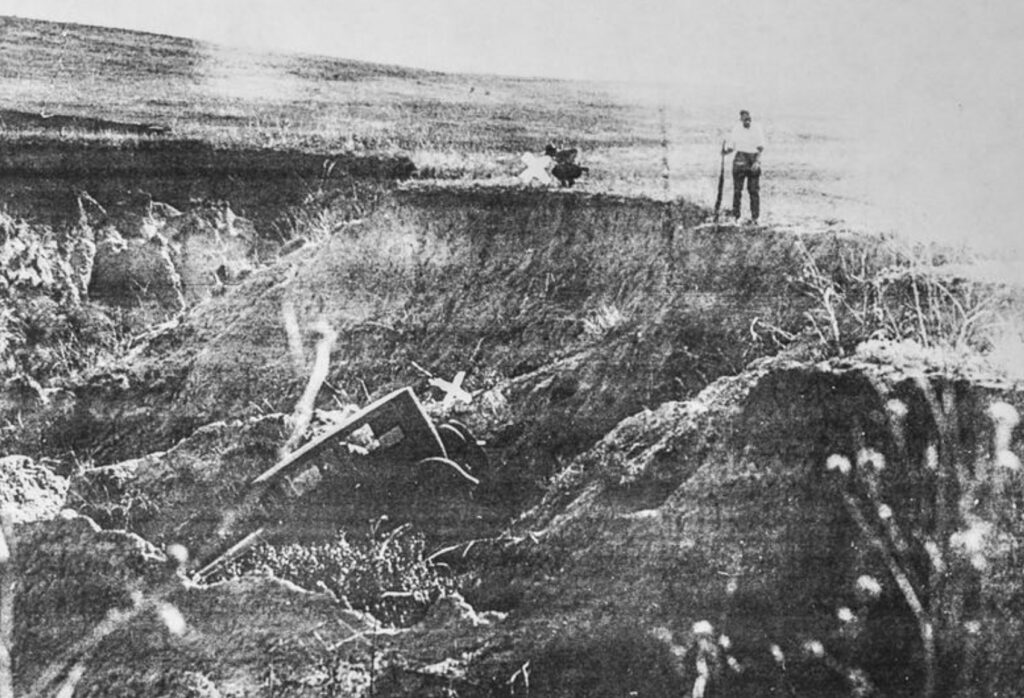
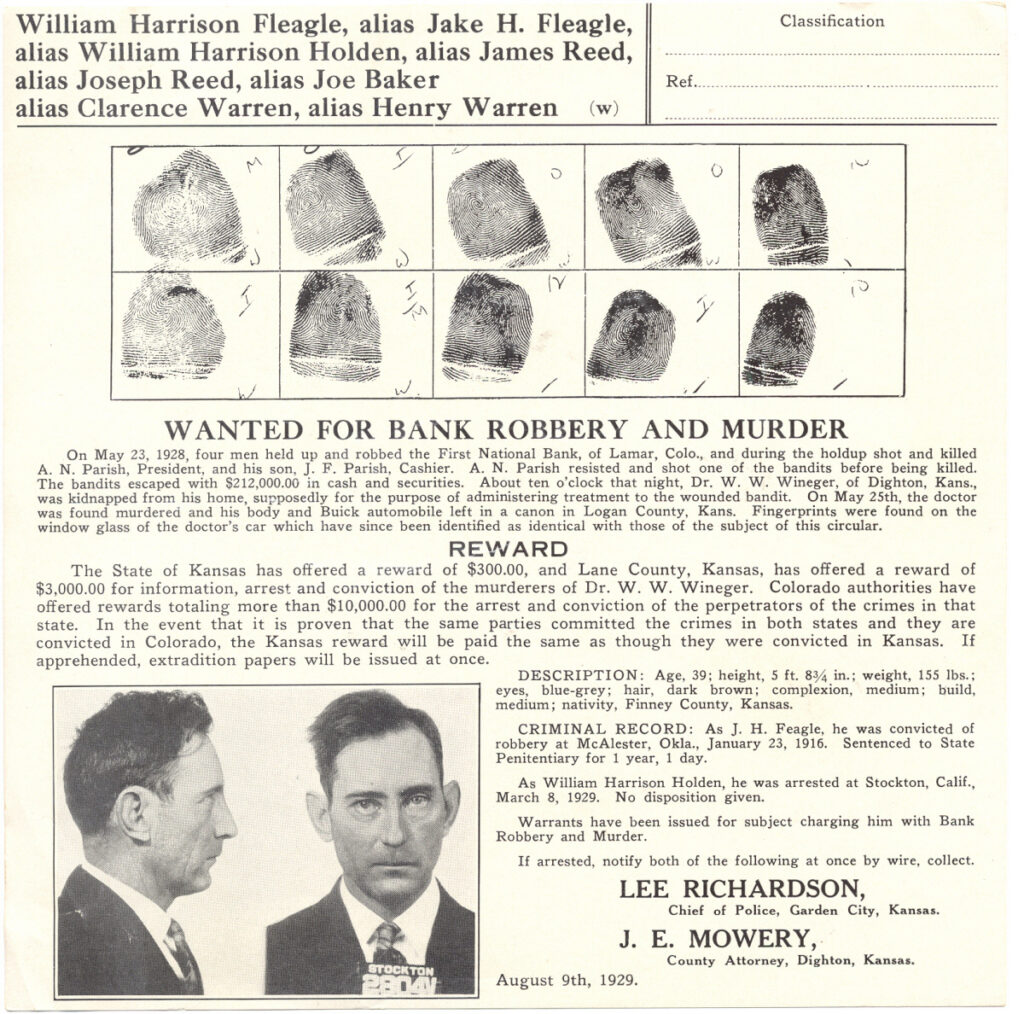
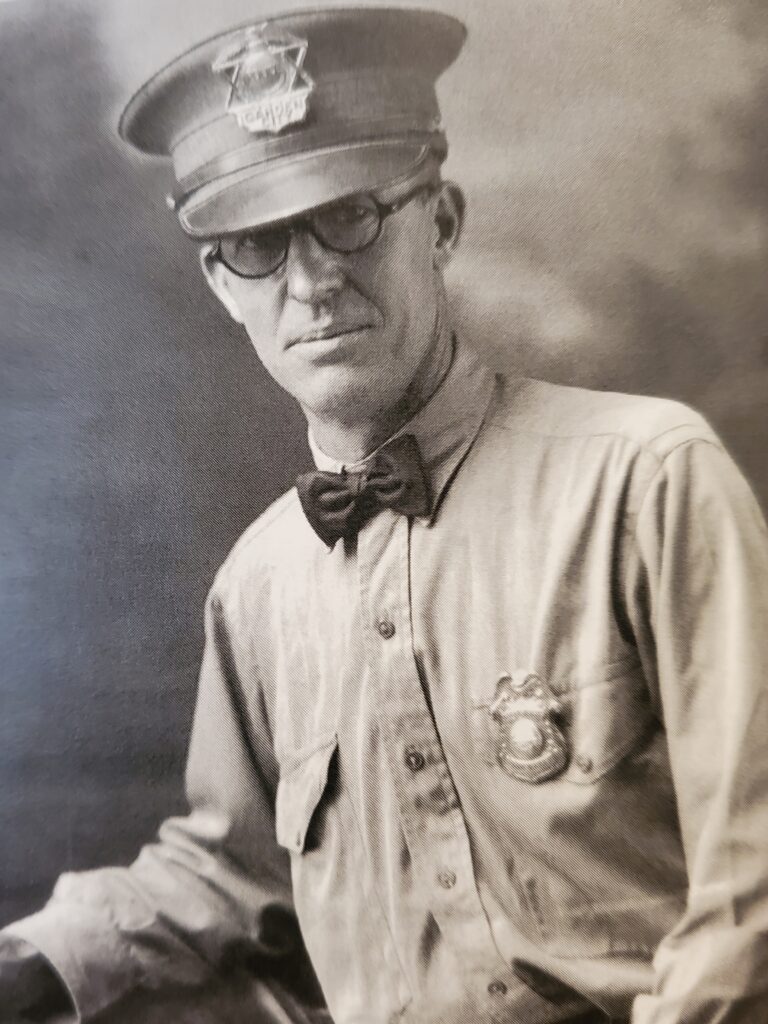
The attempt to identify the gang continued with no shortage of suspects. The national pastime during these decades seemed to be bank robbery, instead of baseball. A total of 58 men had been arrested for involvement in the robbery–none were the robbers, but 25 of them were wanted for other crimes.
On June 12th, the body of Everett Kissinger, the missing bank employee who was kidnapped, was found in an abandoned house near Liberal, Kansas. He was victim number four.
Finally, a break
Several robberies of banks, post offices and trains occurred in California around this time. In early 1929, suspicions were focused on a woman and two men in Stockton, California. They were picked up, interviewed, fingerprinted and released with no charges. Their prints, like all others, were sent to the forerunner of the FBI, which was known at that time as the Bureau of Identification. The Bureau identified one of the men picked up in Stockton as Jake Fleagle. He was then identified as the person who left the print on Dr. Wineinger’s car.
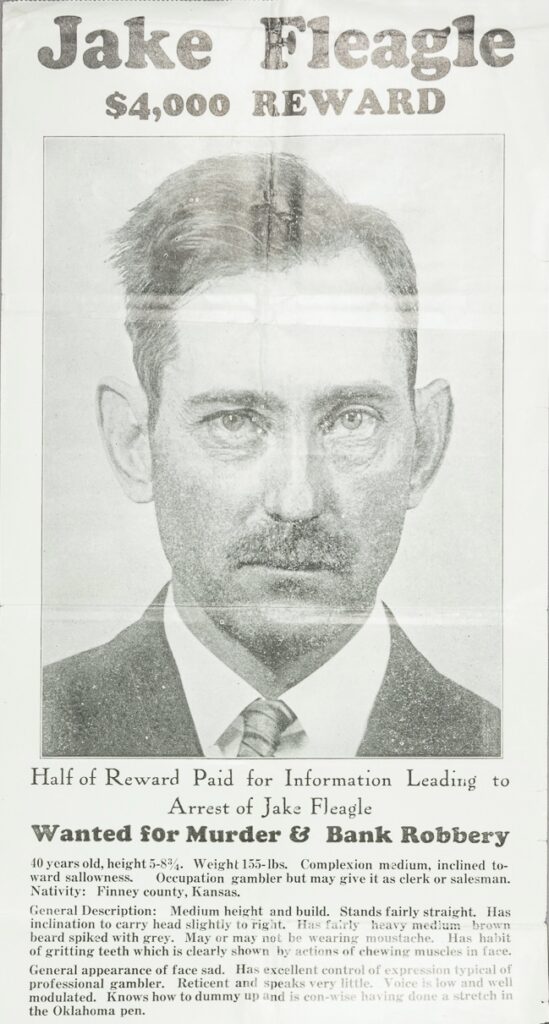
After continued investigations, the Lamar robbers were identified as Jake and Ralph Fleagle, Howard Royston, and George Abshire. By August of 1929 all but Jake were in custody. By the fall of 1929 all three had been tried, convicted and sentenced to hang. During the appeal process Jake wrote a letter to the Governor of Colorado asking for mercy for his brother. Little did he know that his distinctive writing would lead to his own death.
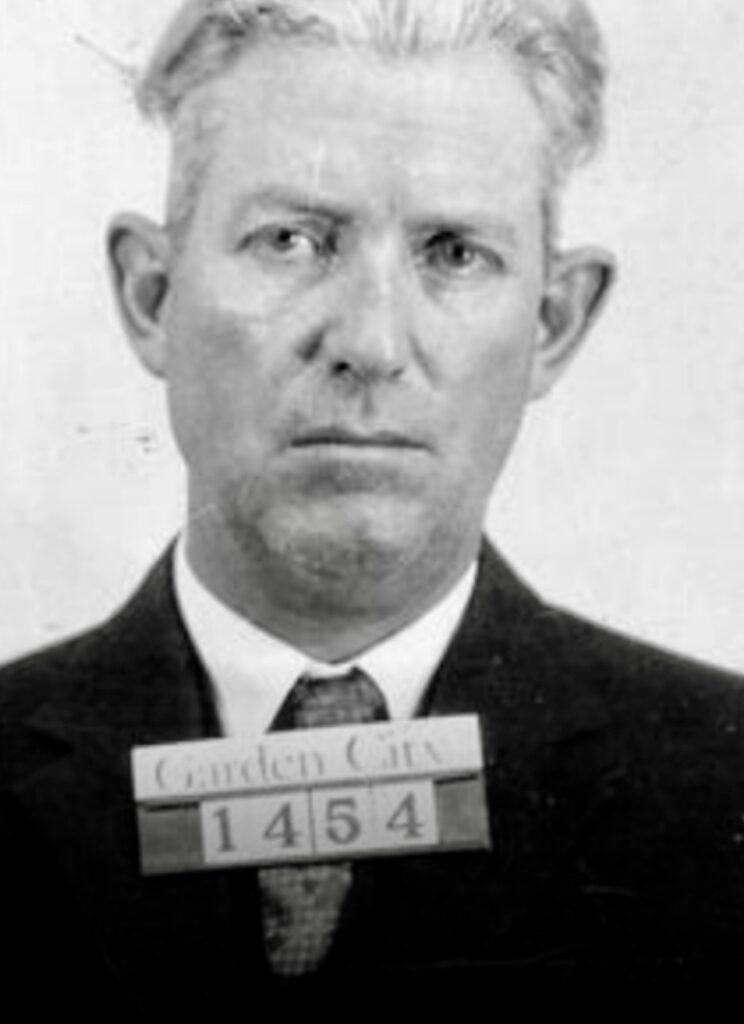

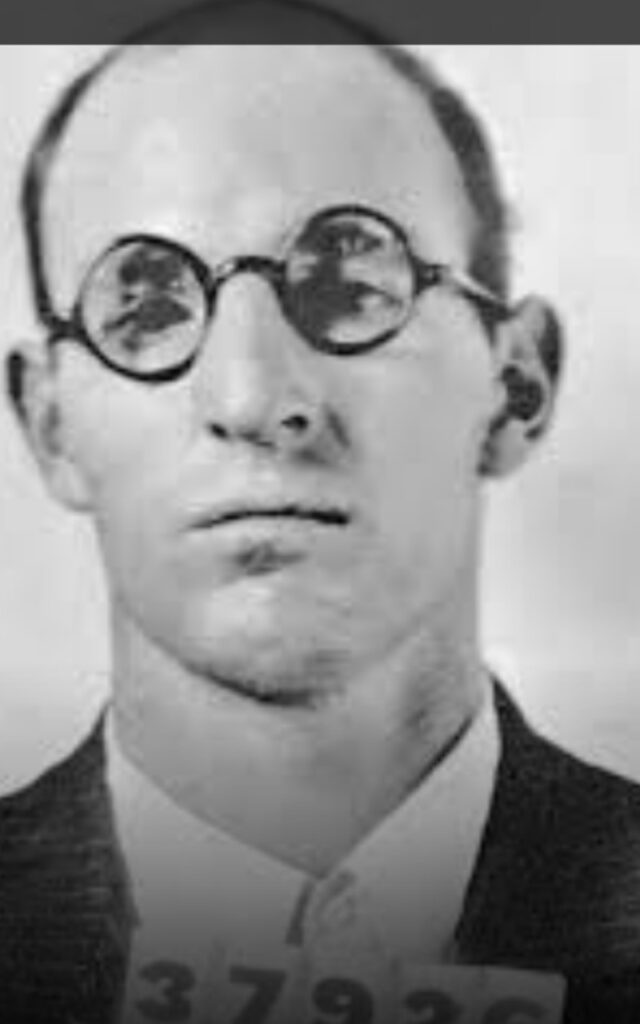
Partial Justice served
The trials and convictions of Ralph Fleagle, Howard Royston, and George Abshire occurred in the fall of 1929. The three robbers were executed shortly thereafter, in July of 1930. Today, capital crimes usually require 30 to 35 years from conviction to completion of sentence–perhaps the definition of “swift and speedy justice” has changed since 1930?

Now, only Jake remained. Letters from Jake to his ex-wife, and to other criminal associates, which were written in his distinctive script, led the manhunt to concentrate its focus on the railway mail service along Missouri Pacific’s White River Line, from Arkansas up into Missouri. Another letter to one of his associates, inviting him to join Jake in the robbery of the bank at Yellville, Arkansas, was intercepted by Investigators. In the letter, Jake instructed his henchman to meet him in Branson, Missouri, on the 14th of October, 1930.
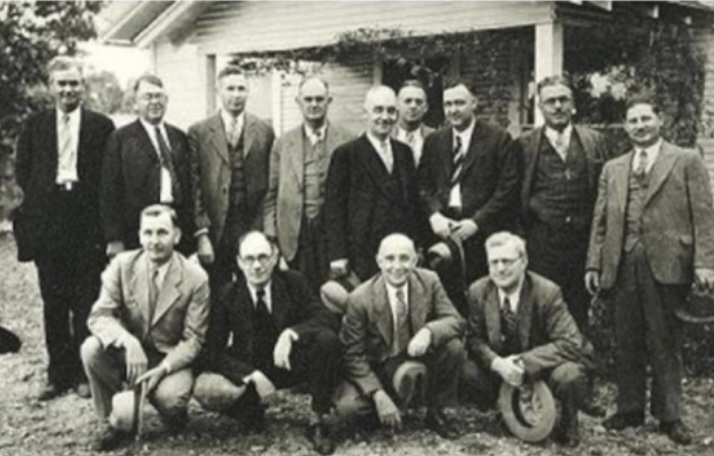
Springing the trap
As Jake boarded the train at the Branson Depot that morning, at 7:00 a.m., he was met by numerous officers. Lieutenant Harry Wilde of the Los Angeles Police Department, accompanied by his partner, Lieutenant C. A. Lloyd, and Kansas City Police Department Officers King and Nelson, approached Jake and called for his surrender.
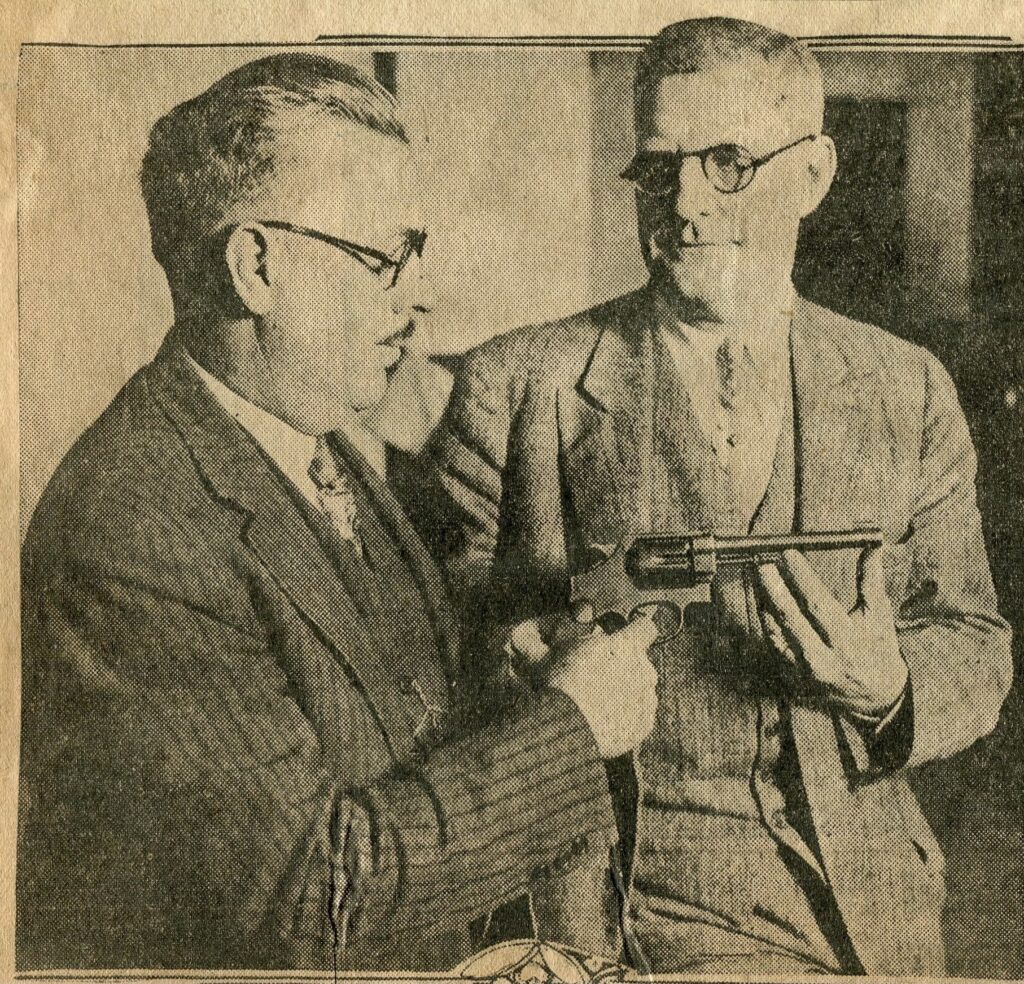
Jake attempted to draw his revolver from a holster worn on his left side. Wilde shot Jake in the body, and he was arrested. He was carried off the train and moved to a hospital in Springfield, Missouri, where he died the next day. Justice had been served on the Lamar Bank Robbers!
Influence
Years later, two different comic strips were populated with characters inspired by the Fleagle gang.
The Donald Duck Disney cartoons featured the “Beagle Brothers Gang,” robbing banks and trains. Another popular cartoon, Lil’ Abner, by Al Capp, featured a bad guy by the name of “Evil Eye Fleegle,” who would put the double whammy on his victims with his evil eye. I don’t believe the names were chosen to glorify the crime, but rather to use a name that was prominent in the national conscience at the time.
Remember, without the certainty of punishment, there is no deterrent to crime!
Stay safe!

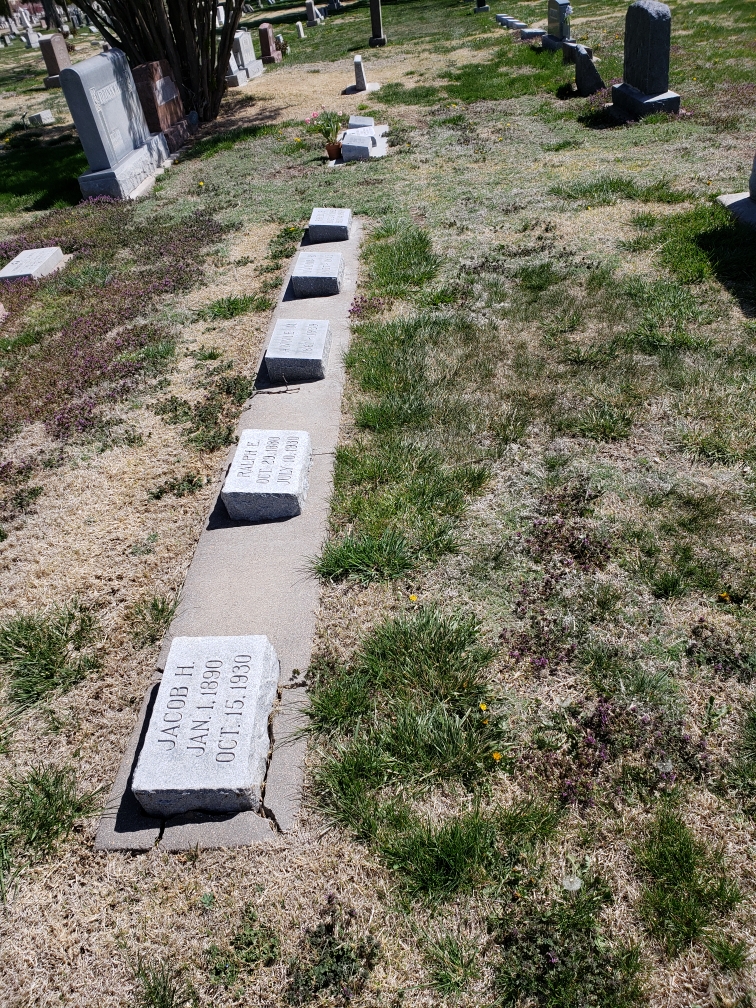
*****
Suggested reading:
N.T. Betz’s excellent book, The Fleagle Gang, Betrayed by a Fingerprint

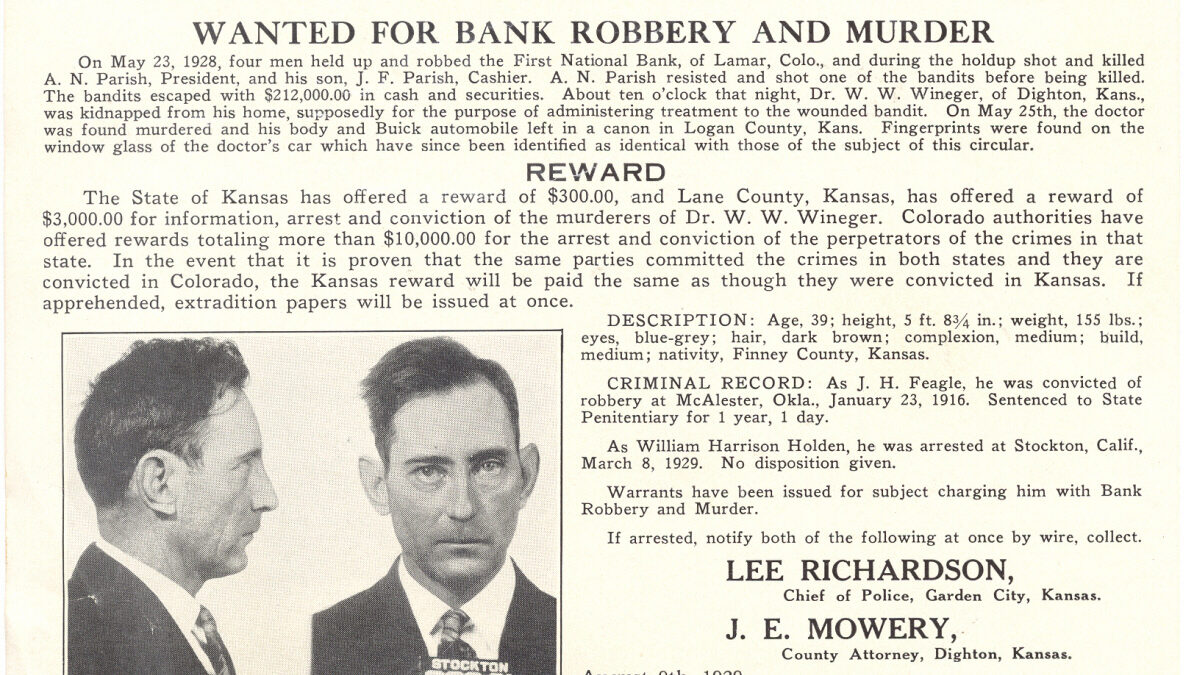
Great article, Tony. It is good to remember that there is more to guns and shooting than statistics and technical stuff, especially when the targets become people not paper. I hope you do a lot more here on RevolverGuy.
Welcome Tony! I truly enjoyed the post and look forward to more.
A few things immediately came to mind:
1. Although times change, the makeup of society (both good and bad) do not.
2. Although a violent period, the fact that even the bad guys all wore suits and dress shirts back then has to have you take pause…
Thanks again!
Jim
Thanks Mr. Perrin for the look back on this incident; it paints a clear picture of the crime/policing of that day. The information provided on Jake Fleagle’s wanted posters was particularly fascinating. It’s amazing the amount of detail they put out!
“Remember, without the certainty of punishment, there is no deterrent to crime!” Truer words were never spoken, especially where I live–Portland, Oregon–where the wimpy mayor and city council have all but handed the city’s keys over to bums, riffraff, gang bangers, dribbling lunatics….
Mr. Perrin,
Thank you for a very interesting article. I began my Law Enforcement career a few years earlier than you and have enjoyed the many articles that Mike Wood has written on police gear that I used, it seems, not that long ago.
I also am an avid student of the history of Law Enforcement in this country and articles such as the one you have penned add measurably to our body of knowledge.
I keep checking on the opening of the U.S. Marshal’s Museum in Fort Smith. Will I see you there when it opens?
All the best,
RBO
RBO, the airplanes I started my flying career with are now in museums and being flown to the Boneyard . . . I know how you feel, friend! How did all our gear become artifacts, so quickly?
Tony, thank you again for the wonderful story! I really enjoyed this look into an age of American law enforcement that fascinates me.
I think it’s pretty amazing that the Bureau was able to make the fingerprint match, using the manual methods available at the time. There must have been a keen investigator that made the connection between the cases, because manually comparing the recovered print to the inventory of prints on record would have been too time intensive to produce such a quick result. Hats off to the unknown gent who made the discovery!
I enjoyed thinking about how a Los Angeles, CA police officer was able to exercise jurisdictional authority in Branson, MO without causing a stir, and without a mountain of paperwork to pave the way. Times were simpler then, and it seems that the men wearing the badge understood they were all on the same team, all in the same fight, and a silly little line drawn on a map wasn’t going to stop them from doing their job. Today’s police chiefs, administrators, district attorneys, mayors and governors could stand to learn a thing or two from this example!
The swift justice and positive media reporting were just icing on the cake. Who says we’ve “progressed” since those times?
It’s hard to tell from the photo, but it appears Fleagle’s gun has four sideplate screws and an ejection rod with a large knob. No shroud for the ejection rod, and the cylinder looks too big for a .38 caliber K-Frame. Maybe a .44 Hand Ejector, Second Model? Possibly a 1917? What do you guys think?
It is definitely too large for a K-frame. I’ll put my money on a M1917 Hand Ejector. Post WW-I they were readily available as surplus, and were a proven platform.
Great stuff! Thank you Mr. Perrin!
I like your first guess, Mike. The gap in front of the cylinder looks to be too narrow to be a .45 ACP cylinder and the barrel appears to be longer than a standard 1917 barrel. I vote for the 2nd Model HE .44.
Great observation about the .45 ACP barrel gap, Kevin! Yes, I think we’re barking up the right tree with the 2nd Model HE .44, especially since Royston used a .44 to shoot bank president Parrish. Maybe it was even the same gun?
Kudos on the great post Mr. Perrin. I spent 32 years in law enforcement, serving as a Deputy Sheriff and retiring as a GS-1811/ Criminal Investigator after 25 years. I love the stories of the guys that served before us and the firearms they used. Keep up the great work Revolver Guy!
Great to have you here, KM! Congratulations on making it to the finish line, nd hank you for your 32 years of LE service!
Folks thank you very much for your kind comments.
The Bank of Yellville was “robbed” twice in its history that I know of. A nighttime burglary in May of 1957 by a stupid kid who shot and wounded Marion County Sheriff Jack Pace.
and a real crime, the Ma Barker Gang robbed the bank in 1970. 1970? they were all dead. Yep a terrible movie called “Bloody Mama” showed the gang robbing the bank of Yellville. The film starred Shelly Winters and introduced a new Actor named Robert DeNiro, don’t think he would be too welcome in these parts today.
BC will try to do some more Good Lord willing.
Jim very insightful comments especially about the sartorial splendor of the era.
Kevin I have chased antiques of law & order for 50 years and looked at thousands of wanted posters. The Fleagle one with the facial features drawing is very unique. 35 years or so ago was in a Flea Market in Branson and there was a plaster Death Mask of Jake Fleagle for sale. Too much money for me at the time, have often wished I had scraped up enough to preserve that relic.
Spencer I first saw that quote on the certainity of punishment in an 1870s newspaper from Fort Smith, Arkansas. It was during the early days of Judge Issac Parker’s tenure on the court for the Western District of Arkansas and the Indian Territory.
RBO Thank you for your years of service! Always good to hear of another LEO who appreciates the history of the profession.
Will be there at the opening if possible.
Mike, once again my deep appreciation to you and to the staff for wanting to share a bit of history. I will try to not disappoint.
Yes this case sure emphasizes the importance of teamwork in the criminal justice system.
Amen also on lessons learned from history.
Each of you Folks stay safe in these crazy times we live in.
Tony
No fears of disappointment, Tony! You’ve always got a home here, my friend!
TP, Wonderful article!!
Who knew an old friend from grade schools days would be such a skilled writer and historian of
LE!
Keep up the Great Work, my friend until TDDUP!
DH
Thank you for the great website and another great article. A retired burglary investigator here who has processed a lot of burglary scenes. Old school forensic work by the Garden City KS police officer that recovered the latent print. I believe good old school forensic photography work by the Garden City KS police chief was key identifying the boots worn by one of the suspects in the Clutter murders made famous “In Cold Blood”.
I did some research on the Garden City KS PD website and I must correct myself. The photographer was Assistant Chief Ritch Rohleder.
John, you may already have a copy but if not there is an excellent book on the history of the Garden City P.D. by Myra Vanderpool Gormley. I picked up a copy at the Finney County Museum.
I am not sure if the museum will run their recent special exhibit on Crime again anytime soon or incorporate it into the permanent exhibits but they did have Perry Smith’s boot that left the incriminating print at the Clutter murder scene in the display.
Thanks!
I’ve known Tony for many years now. He is a dear personal friend. Tony is a law enforcement historian of the highest order, and an extremely knowledgeable revolver aficionado. Tony recently gave me many books from his personal collection, and handpicked the ones he wanted me to have. You’ll not find a more kind and generous man.
I truly enjoyed this article, including the illustrations! I love this time period in American history and that it is directly related to my home state of Arkansas. I’d heard of the Fleagle gang, but didn’t know much about them until I read this superb story. I can’t imagine a death penalty case going from courtroom to the morgue so quickly. My favorite line from the article? “Remember, without the certainty of punishment, there is no deterrent to crime!” Absolutely true! Thank you for your outstanding work, Tony, and I look forward to more!
Chris, we’re very fond of Tony and his excellent work, and as long as he has the notion to keep writing, we’ll be proud to feature him here! Thanks for reading!
How did the law enforcement successfully end this chase without a hi-cap 9mm and micro red dot?
My parents went to little one-room country schools in the 1930s, in the area between Healy & Shields, Kansas, which is roughly 10 miles north of Dighton. I was born in 1951 & raised on our farm east of Dighton, with paternal grandparents living in town and maternal grandparents on their ranch about 24 miles NW of Dighton, in Gove Co. So over the years, I’d heard quite a few stories about the Fleagle gang, and the murder of Dr. Wineinger – not just from relatives, but from other folks who remembered the excitement of the hunt for the robbers/murderers. Dr. Wineinger’s house still stands in Dighton, and was occupied for a couple of years by an old grade school friend who was also a doctor who practiced here.
There was a bank robbery in Dighton back in the late ’20s – early ’30s, and it didn’t take long to form a posse to pursue the robbers. They cornered a single robber who’d hidden in a hay stack on a farm several miles east of town, and due to ‘poor tactical awareness’, the posse members (who had surrounded the hay stack) started firing guns into it, mortally wounding the robber, but also wounding a few posse members in the process. No one ever learned the robber’s actual name, but he was known around town as ‘Blackie’, and a limestone headstone with that name carved into it was erected over his grave out at the cematary several years ago. Nothing very exciting ever seemed to happen in our little town when we were kids, but the older folks could sure tell some good stories about the ‘old days’.
Dennis, great to hear from you! Thank you for adding this to the story!